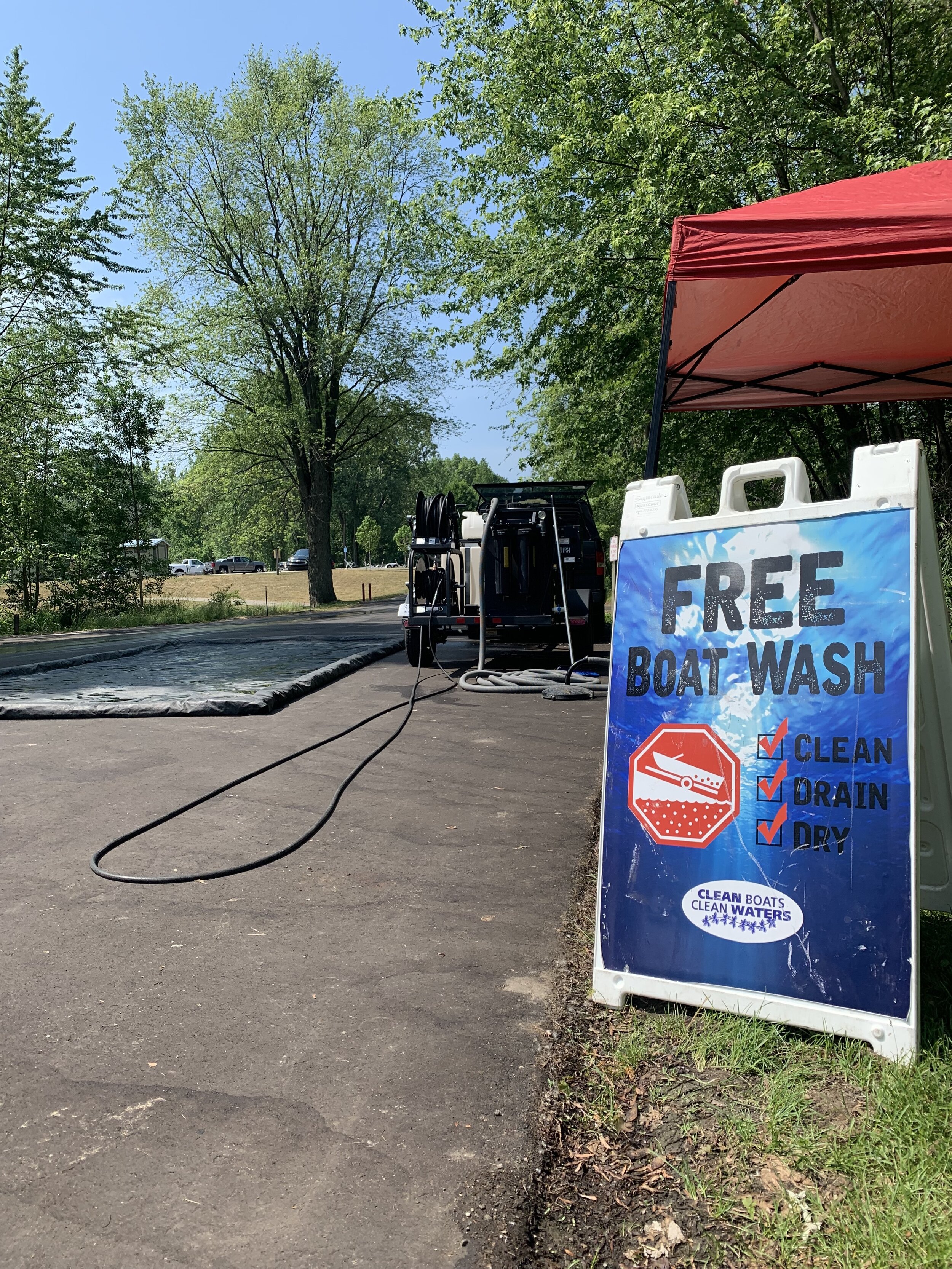Preventing the Spread of Aquatic Invasive Species
Zebra Mussels (Dreissena polymorpha). Image from https://stopaquatichitchhikers.org
Aquatic invasive species present a great threat to the health of the Grand River watershed. Invasive species are able to eradicate native populations by reducing biodiversity, altering habitats, and competing with native plants and animals for finite resources. LGROW’s aim is to maintain the health of the Grand River watershed through a myriad of watershed educational tools and best management implementation. Educating boaters and kayakers are a great way to combat aquatic invasive species by equipping the public with the knowledge to prevent the spread.
LGROW is pleased to announce that for this summer, we’re partnering with the Clean Boats, Clean Waters (CBCW) program to host outreach events at popular boat launches on the Grand River! Clean Boats, Clean Waters has been educating Michigan boaters about aquatic invasive species since 2006. At these outreach events, LGROW will be spreading the importance of Clean, Drain, Dry to boaters and offering a free boat wash to eliminate aquatic hitchhikers. If you would like to participate or learn for information about these outreach events, see below for more details.
To prevent these aquatic hitchhikers, we recommend the following actions:
CLEAN - Boats, trailers and equipment.
DRAIN - Live wells, bilges and all water.
DRY - Boats and equipment.
DISPOSE - Unwanted bait into the trash.
Did you know? It’s the Law!
DO NOT launch a watercraft or place a trailer in the water if aquatic plants are attached.
DO NOT release unused bait in the water.
DO NOT transport water over land in bilges and live wells.
Violation of the law is a civil infraction. Violators may be subject to fines.
Volunteers Needed!
LGROW is in need of volunteers for the two upcoming outreach events at boat launches on the Grand River. For more information on how you can get involved, please email LGROWgrad@gvmc.org for more details.
Invasive Species Spotlight
Spiny water flea (Bythotrephes longimanus). Image from https://stopaquatichitchhikers.org.
Spiny water fleas (Bythotrephes longimanus) are considered a planktonic crustacean due to their reliance on wind and water currents to travel long distances. This species has a unique body shape that consists of a hard outer shell and a very long barbed tail making up about 70% of the animals total length. Native to Northern Europe, this invader was first identified in Lake Huron during 1984 and has since reproduced rapidly throughout all the Great Lake states and Canada. This species can often be found on fishing line or on other equipment in clumps that resemble a gelatinous blob with the texture of wet cotton. The spiny water flea is a threat to our waters because they prey on native zooplankton, reducing or eliminating important food sources for native fish. Due to their long spine and spikes, these animals do not provide a good food source for native fish.
LGROW’s aquatic invasive species outreach prevention event on June 12, 2021 at the Riverside County Boat Launch in Grand Haven, Michigan with Michigan State University’s Mobile Boat Wash team!




